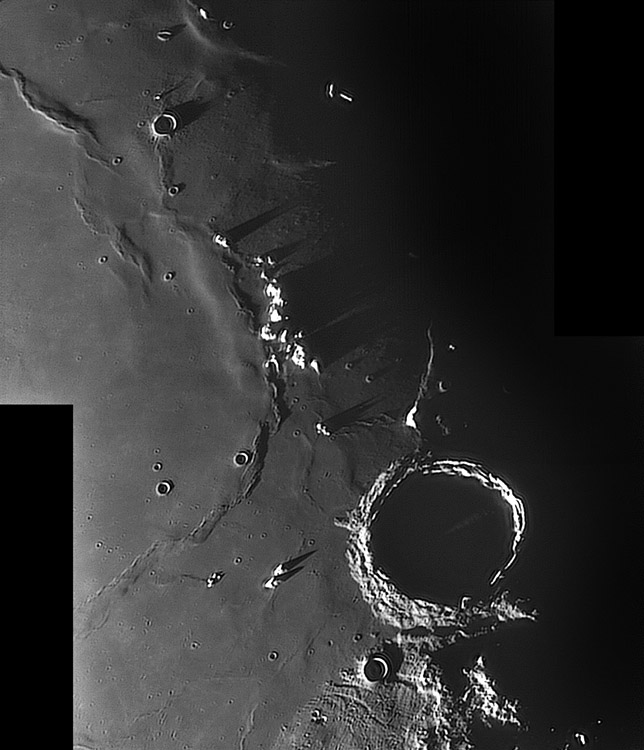November 6, 2013
A Stiletto's Gap And Archimedes' Bench

image by " rel="nofollow Maximilian Teodorescu, Dumitrana (Ilfov), Romania
One of the most fascinating things to observe on the Moon is the rising or setting of the Sun across a mare. As the terminator moves across a generally smooth surface every bump shows up. Here on the eastern edge of Mare Imbrium the isolated Spitzbergen Mountain range casts stiletto-like shadows that noticeably lengthen or shorten over an hour at the eyepiece. At upper right, sticking up from the first darkness of a coming 14 day lunar night is the roughly T-shaped Piton Gamma peak that may be part of an Imbrium inner ring. Near bottom center, just west of shadow-filled Archimedes, is the peak Archimedes Zeta, a designation given by Mädler 180 years ago, that has shadows showing that it is twinned peaked. An inverse shadow - both in the direction of its tip and in being bright rather than dark - crosses the floor of Archimedes. The light is leaking through a low spot of the crater's western rim - the LRO altimetry data show the " rel="nofollow low spot is about 650 m lower than adjacent normal rim heights. Finally, at the bottom center the low illumination emphasizes the sharp boundary between the mare lavas and the older " rel="nofollow Archimedes Bench Formation. LRO altimetry shows that the boundary is due to an abrupt steepening of slope. The flat-lying lavas flowed up against the rising Bench and could go no further.
" rel="nofollow Chuck Wood
Technical Details
October 27, 2013. C11@F/25, ASI120MM, IR-pass filter (685nm). CAW over-enhanced Max's image to highlight the shadow features.
Related Links
21st Century Atlas chart 18.
Max's " rel="nofollow website



